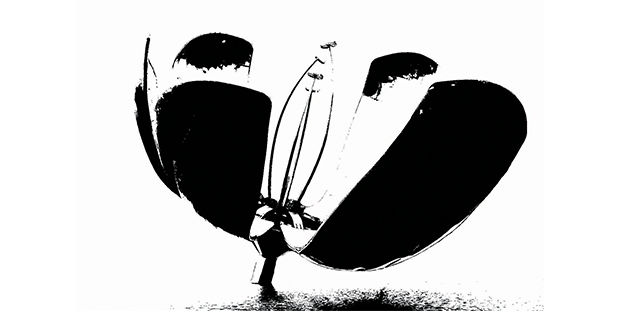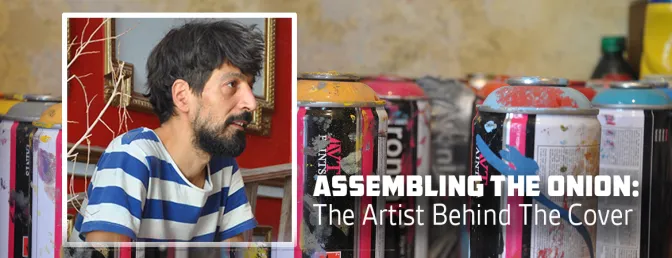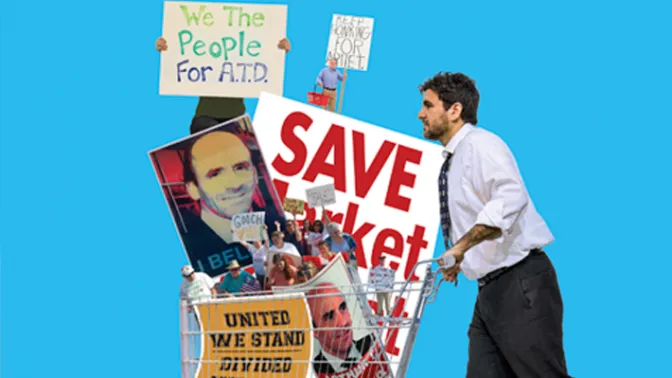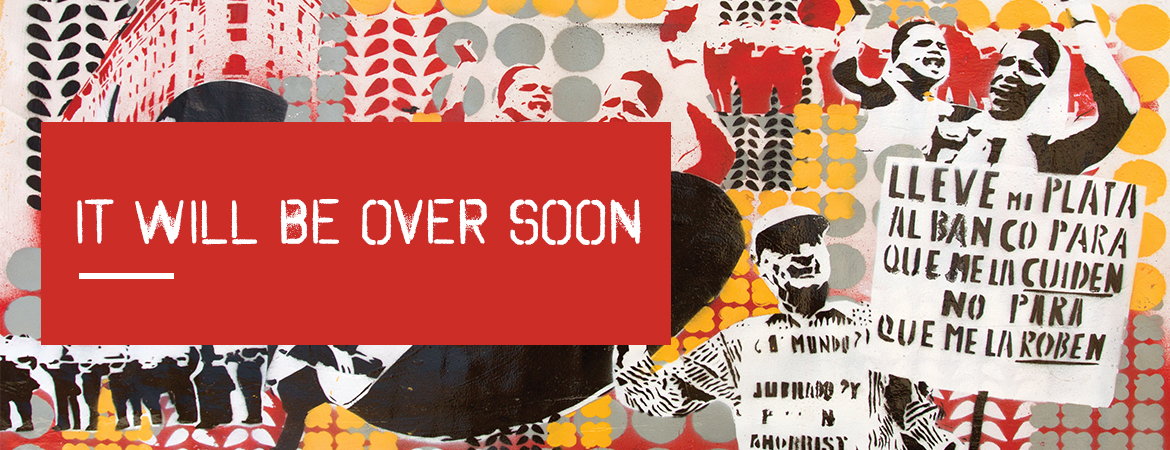
It Will Be Over Soon
Buenos Aires is a flower that has bloomed and withered through the ages with belief and incredulity, light and darkness, hope and despair.
You can see it on the streets and in the architecture, on the graffiti and in the protests. One particular road, the Avenida Figueroa Alcorta, can tell the tale of a metropolis that was once the envy of all Latin America if you pay close attention. The road is lined with lavender jacarandá trees that were planted in 1875 to commemorate the ousting of one in a long line of deposed politicians. Driving west down the thoroughfare, you pass the University of Buenos Aires Law School, a massive neoclassical landmark built by President Juan Perón in the 1950s as headquarters for Argentina’s largest labor union — an enduring tribute to the populist support that fueled his power. Today, Congress — the majority of which remains populist — sometimes meets there. The school is also one of Argentina’s highest-ranked free public universities.
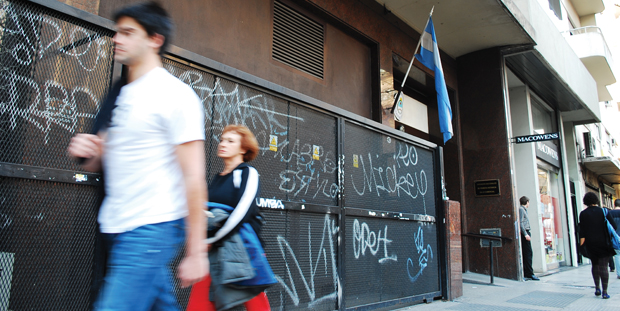
This is Buenos Aires. This is Argentina: A nation paralyzed by 70 years of self-inflicted inertia. Some say the frozen flower represents Argentina’s inability to change. Others call it a symbol of decline. But as any Argentine will tell you, the flower probably just went on strike.

In August 2013, 44 LeBow MBA students attended a 10-day international residency in Buenos Aires. The recurring question that professors and executives asked during company visits and group discussions was: Would you do business in Argentina? However, after the first day, it was clear that the question was a softball. The answer is no — and it will remain no for the foreseeable future. The real question is How? How did Argentina go from being the world’s 10th wealthiest nation in 1913 to 59th a century later? How did it plummet from fourth to 21st in GDP? How did the Paris of Latin America get covered in so much graffiti?
Although each student researched the economy and composed reports on the companies they would visit before the trip, few were prepared for the anthropology behind the numbers. It’s easy to look at balance sheets and say, “Business is bad in Argentina.” It’s much harder to trace the DNA of decline — to understand that it isn’t just bad business; it’s a genotype passed through generations.
The red flags were flapping the moment the students arrived. Inside Ministro Pistarini International Airport, students passed by currency exchange booths advertising the government-sanctioned exchange rate of 5.6 pesos to the dollar. Many students swapped hundreds of dollars at this rate, which is favorable, but not nearly as lucrative as the “blue market” rate. The blue market is the direct result of controversial President Cristina Fernandez de Kirchner’s 2012 decision to formally ban the populace from purchasing dollars in an effort to protect foreign currency reserves. The ban has resulted in a thriving network of dealers you can easily find on the city’s busier street corners, who purchase dollars at a rate 50 to 60 percent higher than the government-sanctioned rate. On the first day of the residency, the blue market rate was 8.5 Argentine pesos to the dollar. The day the students left, it had reached 10.
Some more red flags: During the residency, the United States reciprocated Argentina’s ban and stopped exchanging the Argentine peso; Nextel announced it was pulling its service in the nation, in part due to the Ministry of Communications’ refusal to allow the company to provide LTE service; and President Kirchner (known to all as Cristina) battled Clarín, the nation’s largest media corporation and voice of political dissent, in a televised spin war after winning just 26 percent of the vote in Argentina’s primary election.
There are 1.1 million square miles and 40 million people in Argentina. About 40 percent of the country’s population lives in Buenos Aires province. More than 2 million people live in about a thousand shantytowns, called villas miseria, just outside the city — making the ghetto the second or third largest “city” in the nation, depending on the source (and Argentina’s National Statistics and Censuses Institute is infamous for underreporting everything from inflation to the weather). Driving by these settlements each day on chartered Mercedes buses, students took pictures and asked, How is this possible?
This is what they learned.
By all natural indicators, Argentina is a gold mine. The earth can grow almost any crop, and it is bordered by 3,100 miles of coastline ripe for trade. From the fertile soil of the pampas in the middle of the country (the Argentine bread belt), to Patagonia, which offers ideal grazing for cattle and oil reserves in the south, Argentina is blessed with a wealth of natural resources. In 1890, it ranked sixth in per capita income and 10th in trade. During the first 30 years of the 20th century, Argentina’s economy grew, on average, by 4 percent more than the United States. Argentina welcomed nearly 3 million European immigrants by 1920 alone, as the nation blossomed as a net exporter of grain and cattle.
The remnants of the country’s European influence can be seen today in the architecture. French bourbon, neo-Gothic, neoclassical, art deco and even colonial-inspired buildings are scattered among the 47 neighborhoods. During the roaring twenties, Buenos Aires’ cafes were brimming. It truly was the Paris of the Latin World.
Under the rule of the Radical party, which held the reigns from 1919 to 1929, the economy grew by an average annual rate of 6 percent. However, despite thriving exports, as other countries experienced industrial booms in cities between the first and second world wars, a kink in the system was exposed: Argentina still imported the majority of its industrial equipment. Cars. Trains. Tractors. Cranes.
Under the new Coalition rule of a party of conservative aristocrats, the government levied taxes on imports and enacted numerous exchange rates to make the costs of domestic industry more beneficial. Labor became the final, enduring push that to this day remains the fulcrum of Argentine politics — and agrarian workers migrated in droves to work in Buenos Aires. In 1943, the same year a military coup ousted the Coalition regime, industrial production outpaced agricultural production for the first time, accounting for 20 percent of the nation’s exports. However, the inevitable hangover of public dissent had already taken hold. By the dawn of the 1940s, workers had already grown tired of low wages and political corruption. As disenchantment swept through the neighborhoods, one man emerged as a friend of the worker. To this day, he remains the most scrutinized public figure in Argentina’s history.
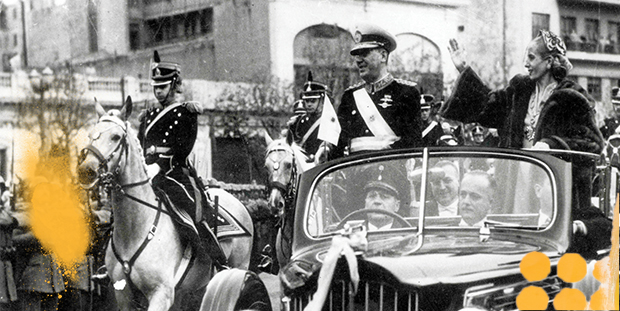
Perón’s policies redistributed internal wealth to increase industrial production while decreasing dependence on foreign imports. His goal was economic independence — although history’s emmetropic hindsight would call it the beginning of what is now a dangerously isolationist Argentina.
If little girls wrote her a letter, Evita sent them a doll. Little boys got a bike.
Under Peronism, public policy outright neglected agriculture. The push was in cities, not the pampas or Patagonia. Instead, Perón poured federal money into industry, regardless of need or efficacy. During his tenure, credit was extended to manufacturers and the lowest-income workers saw the highest salary spikes. During a five-year span, unskilled workers saw wages rise by 37 percent while skilled workers’ rose 27 percent. Argentina’s GDP rose 25 percent. Perón instituted price controls on goods, as well as full employment, public health care and housing for the people. He nationalized transportation, communications, foreign trade and even energy.
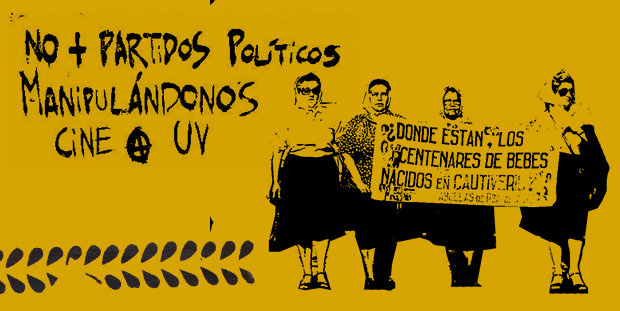
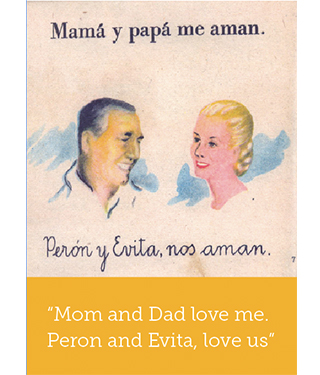
People were given jobs for which they were not qualified, lived in homes they had not earned and received some of the highest wages in the world, comparatively speaking. Life was good; but the bubbles of inflation, isolationism and — most importantly, the bubble of a spiritually conflicted collective conscience — would burst.
Argentina was employed, but the people were stripped of the basic human satisfaction of a hard day’s work. The damage was done. And 60 years later, people still say, “I want to go back to the good old days.”
Growing up, as a 12-year-old, the topic at the dinner table was inflation and bankruptcy.
Ever since Perón, the nation’s dependence on the government hasn’t stopped. Argentina has had 23 presidents since, each serving an average tenure of just 25 months. And while a series of charismatic leaders and military regimes have attempted to change the inevitable with an endless chain of austerity measures, the country has spiraled into one crisis after another. From 1983 to 1988, inflation averaged 350 percent. In 1989, it rose to 5,000 percent. Meanwhile, most services remained free to the public.
Maria Olivero, Ph.D., an associate professor of economics at LeBow, was in ninth grade in 1989, when inflation exploded. She grew up in Córdoba and attended the National University of Córdoba – the oldest university in the Americas. There were 5,000 students in her freshman class in 1993. Just about 10 percent graduated in 1997. They attended lectures with 600 to 700 students crammed into a hall meant for 400. Olivero says most of her peers left the country to study abroad after graduation.
“Growing up, as a 12-year-old, the topic at the dinner table was inflation and bankruptcy,” she recalls.
She also remembers the absurdity of government price controls — how one particular grocery store would, for example, sell a package of sugar for 10 percent of the price other stores were charging; yet each family could only purchase a quota of two packages a day.
“So here I am at 12 or 13. My mom would have me run to the store to buy two packs of sugar,” she remembers. “And my brother would do it two hours later.”
Olivero’s story was echoed in millions of households for a decade. How do you fight a monthly inflation rate of 30 percent? You can’t. You lose trust in the government. You lose faith in your currency.
In 1999, with crisis looming, Argentina’s foreign debt rose to 50 percent of its GDP. In 2001, civil servants and government pensions were levied a 13 percent pay cut. Later that year, they were compensated with I.O.U.s. Unemployment reached 20 percent. Argentines panicked; they withdrew their money from the national bank and exchanged pesos for dollars. In response, the government froze all bank accounts for one year, barring small weekly transactions. People protested. They began banging pots and pans. Then, they rioted. Just before the New Year, Argentina defaulted on $132 billion in public debt.
Today, the people are still protesting. They are still banging pots and pans and using historic landmarks as canvases for anti-establishment graffiti. Because they lack a unified voice, protesting is the only means Argentines have to participate in politics.
“There are no incentives for people to try to move up the ladder,” Olivero says. “The incentive, if anything, is to work for the government. They even say the people who protest get paid.”
When Argentina’s current president Cristina Fernández de Kirchner came to power, she was called the “New Evita.” However, today, her administration — which has disregarded international markets, transparency and continues to nationalize private industry while refusing to deal with a devalued peso and rising inflation — has lost favor among the people. While global economists value Argentina’s inflation rate at 25 percent, the government insists the number is half. The government has also imposed strict pricing and exchange controls. Argentine businesses — even net importers — must now match imports with exports. Argentines who travel abroad must pay a flat 20 percent tax on credit card purchases. Today, children in Argentina’s poorer areas are taught to read and write Cristina just as their grandparents were taught to write Evita.
During February 2012, the IMF censured Argentina for failing to accurately report inflation and GDP growth data. During the entirety of the Kirchner administration, Argentina has declined to participate in the IMF’s yearly assessment. Cristina’s business dealings include the nationalization of YPF oil, as well as a joint venture with Chevron. However, in 2011 Argentina became a net importer of energy for the first time in 27 years. Meanwhile, foreign currency wells have dried up. In 2012, a 70 percent currency devaluation sparked a massive spike in exports, forcing importers to increase prices three-fold or more.
The country is on the brink of another collapse.
During their residency, LeBow students stayed in the famous Hotel Savoy, which Evita called home for a spell in the 1940s back when she was still Eva Duarte. Throughout the trip, the students tasted Argentina’s celebrated Malbec, sampled chops and chimichurri at world-class steakhouses, and learned to tango. They attended soccer games and ate extravagant desserts filled with dulce de leche.
During a cultural excursion to the Tigre Delta, an affluent community of summer homes on the Paraná Delta just north of Buenos Aires, they snapped pictures of homes that look no different than those you’d see in any U.S. resort community. Sergio Massa, the mayor of Tigre, is currently the opposition leader of the newly minted Front for Renovation and is positioned to challenge Cristina for the presidency. He recently denounced Peronism as a movement that “permanently reconstructs itself.”
With each company visit, the students were confronted with another paradox: Argentina is still open for business, to an extent. One would think business has survived despite the turmoil. However, it became clear that the turmoil has become a crucible for natural selection. It was adaptive evolution that allowed business to survive the crises. To say that Argentine businesses have to be creative to adapt is an understatement. They have to change their stripes entirely.
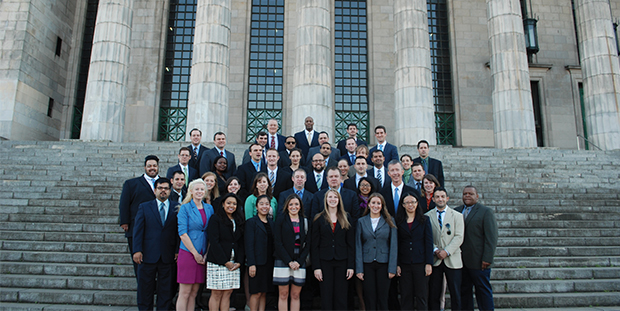
During a visit to Hexacta, a software IT service and outsourcing company, students were amazed to see that money can still be made, despite what, by all indications, is an untenable economic environment. Hexacta thrives on employee retention. It must increase its employees’ salaries twice yearly and constantly adjust its pricing model to combat inflation. Since 2008, their prices have tripled. They survive by out-planning the competition and staying agile — by growing their business in the United States.
MBA student Timothy Fitzsimmons, a Lansdale, Pa., resident who provides interim CFO services, echoed the sentiment of many of his classmates: “We saw overtly how a black market and bribes are part of the culture. While we were there, the president went out and bought votes by lowering tax rates. While we were there. But on the other side of the coin, life goes on in the street. The pizza shops are open. The buffets are still filled with food. The underground economy is the way things work. And if you’re going to do business here, you can’t be a naïve corporate America MBA. Small businesses like Hexacta are still the backbone of the economy. Hexacta is still trying to provide jobs and help society.”
Casey Dougal, Ph.D., an associate professor of economics at LeBow who attended the residency as a faculty liaison, was impressed by the ingenuity most companies must employ to stay afloat.
“Argentina has an export-driven economy, but isolationist government policies,” he says. “What a mix! Imagine the difficulties of doing business in an export-driven country where your access to U.S. dollars is restricted by the government? The ability of these companies to not only deal with this economy, but even to thrive in the face of it, is inspiring.”
Hexacta is an excellent example of survival of the fittest in a nation that has, in large measure, lost its will to adapt. This is not such an explosive statement if you consider the genotype. Argentina’s last government-reported unemployment rate was 7.2 percent — but you could double it without raising an eyebrow. Some believe inflation has skyrocketed to 50 percent.
There is a saying in Argentina: “Vos sabés, es la Argentina! Otra crisis más… ya va a pasar…”
Its literal translation: “You know, it’s Argentina! Another crisis more … it’ll be over soon … “
There is a glimmer of hope. The next general election in October 2015 could usher in radical policy changes that might once again open Argentina to the world. How hard will it be to dig out of 70 years of subsidy? Is it possible? Perhaps the true answer isn’t political. Perhaps it’s up to the people. Failure doesn’t have to be fatal. But failure to change is a different story.
On the last full day of the trip, 44 LeBow students wearing business suits gathered on the steps of the University of Buenos Aires Law School for a group photo. By this time they were bone tired from 10 days of company visits and cultural excursions, group projects and intense discussions. Some wondered if maybe they would have had a different experience had they gone to Brazil or Chile, where numbers are rising. Would they have learned as much? Could they have absorbed more visiting an economy in ascent? Or a nation on top?
Standing on the steps that Juan Perón once intended to exemplify the ascent of the Argentine worker, they smiled for the camera and then dispersed. Some immediately re-boarded the bus. But a few walked over to the Plaza de las Naciones Unidas to take a picture of the remarkable mechanical flower, shining silver and broken in the midday sun.
Maybe one day it will work again.
